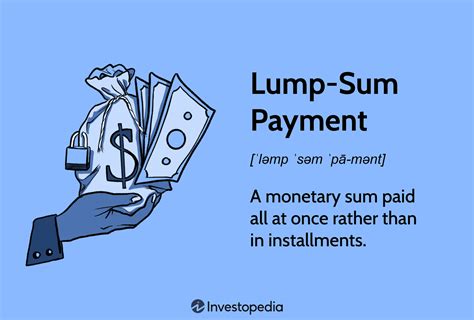
A job seeker’s dilemma has gone viral after being presented with a choice between a $61,000 lump sum payout and a lifetime payment of $355 per month. The unconventional offer, posted on X (formerly Twitter) by user @captiv_8, sparked a debate about the financial implications and long-term value of each option, prompting widespread discussion on social media platforms and beyond.
The user @captiv_8 presented the offer stating, “A job offered me a payout choice: $61k now or $355/month for life. What we doing?” This simple question has ignited a complex conversation around financial planning, longevity expectations, and individual circumstances. The post quickly garnered attention, with users dissecting the potential benefits and drawbacks of both choices.
The core of the debate revolves around calculating the breakeven point—the moment when the cumulative monthly payments exceed the initial lump sum. In this scenario, dividing $61,000 by $355 reveals that it would take approximately 172 months, or just over 14 years, for the lifetime payments to surpass the immediate payout. This calculation serves as a critical benchmark for anyone considering a similar offer.
However, the decision is far from straightforward. It hinges on several factors, including the individual’s age, health, financial needs, and risk tolerance. For a younger individual with a longer life expectancy, the lifetime payments could potentially yield significantly more value over time. Conversely, someone closer to retirement age or with immediate financial obligations might find the lump sum more appealing.
The time value of money also plays a crucial role in the decision-making process. Receiving $61,000 upfront allows for immediate investment, potentially generating returns that could outpace the cumulative value of the monthly payments. Investors could allocate the funds to stocks, bonds, real estate, or other assets, aiming to grow their wealth over time. However, this strategy also carries the risk of investment losses, which could erode the value of the lump sum.
Inflation is another significant consideration. The purchasing power of $355 per month will likely decrease over time due to rising prices. While the nominal amount remains constant, its real value—the goods and services it can purchase—will diminish. This erosion of purchasing power can significantly impact the long-term value of the lifetime payments, particularly for younger individuals.
On the other hand, the lump sum provides immediate financial security and flexibility. It can be used to pay off debt, purchase a home, start a business, or fund other immediate needs. This can be particularly attractive for individuals facing financial challenges or those seeking to achieve specific financial goals in the near term. The option provides immediate control and allows one to dictate its application.
The debate also extends to the employer’s perspective. Offering a lifetime payment plan could be a strategic move to attract and retain talent, particularly in industries with high turnover rates. It can also serve as a form of deferred compensation, aligning the employee’s interests with the long-term success of the company. The structure of such agreements might also offer tax advantages for both the employer and employee, depending on the specific terms and applicable regulations.
The online discussion highlights the complexities of financial decision-making and the importance of considering individual circumstances. While the breakeven point provides a useful benchmark, it is only one piece of the puzzle. Factors such as age, health, financial needs, risk tolerance, and the time value of money all play a critical role in determining the optimal choice.
Financial experts often advise individuals facing similar decisions to seek professional guidance. A financial advisor can help assess their current financial situation, evaluate their long-term goals, and develop a comprehensive financial plan that aligns with their individual needs and circumstances. This personalized approach can provide clarity and confidence in making informed decisions about their financial future.
The viral debate underscores the importance of financial literacy and the need for individuals to understand the implications of different financial choices. By carefully considering all relevant factors and seeking professional advice when necessary, individuals can make informed decisions that maximize their financial well-being. The post’s virality shows just how many people consider these kinds of situations confounding and important.
Beyond the immediate financial considerations, the job offer also raises questions about the evolving landscape of employment and compensation. As companies seek innovative ways to attract and retain talent, unconventional compensation models are likely to become more prevalent. This trend underscores the need for employees to be proactive in understanding their compensation packages and negotiating terms that align with their individual needs and goals.
The availability of sophisticated financial tools and resources has also empowered individuals to make more informed decisions. Online calculators, investment simulators, and financial planning software can help individuals model different scenarios and assess the potential outcomes of various financial choices. These tools can provide valuable insights and support informed decision-making.
The ongoing discussion surrounding the job offer serves as a valuable reminder of the importance of financial planning and the need to carefully consider all relevant factors when making significant financial decisions. By understanding the implications of different choices and seeking professional advice when necessary, individuals can maximize their financial well-being and achieve their long-term goals. The ability to choose is a privileged position to be in, and it highlights the nuances in both financial acumen and personal financial status.
In-Depth Analysis:
The job offer posted by @captiv_8 presents a classic financial dilemma: a guaranteed, immediate benefit versus a potentially larger, but uncertain, future benefit. The choice hinges on several critical factors that go beyond a simple calculation of the breakeven point. A comprehensive analysis must consider the following:
-
Life Expectancy: The longer an individual expects to live, the more attractive the lifetime payments become. Actuarial tables can provide estimates of life expectancy based on age, gender, and health status. For instance, a healthy 30-year-old might reasonably expect to live for several decades, making the lifetime payments a potentially lucrative option. Conversely, a 60-year-old with pre-existing health conditions might prefer the certainty of the lump sum.
-
Discount Rate: The discount rate reflects the time value of money. It represents the rate at which future cash flows are discounted to their present value. A higher discount rate favors the lump sum, as future payments are worth less in today’s dollars. Factors such as inflation, interest rates, and investment opportunities influence the discount rate. For example, if an individual believes they can earn a high rate of return by investing the lump sum, the present value of the future payments decreases, making the lump sum more appealing.
-
Inflation: Inflation erodes the purchasing power of money over time. The fixed monthly payment of $355 will be worth less in real terms in the future due to rising prices. To accurately compare the two options, it is necessary to project future inflation rates and adjust the monthly payments accordingly. High inflation rates diminish the attractiveness of the lifetime payments.
-
Investment Opportunities: The lump sum provides the opportunity to invest in various assets, potentially generating returns that exceed the cumulative value of the monthly payments. However, investment also carries risk. The individual must carefully assess their risk tolerance and choose investments that align with their financial goals. Conservative investments, such as bonds, offer lower returns but also lower risk. More aggressive investments, such as stocks, offer the potential for higher returns but also carry greater risk of loss.
-
Tax Implications: The tax implications of both options can significantly impact the overall value. The lump sum may be subject to income tax in the year it is received, while the monthly payments will be taxed as ordinary income each month. The individual should consult with a tax advisor to understand the tax consequences of each option and make an informed decision. Tax planning can minimize the tax burden and maximize the after-tax value of each option.
-
Financial Needs: The individual’s immediate and long-term financial needs are crucial considerations. If the individual has pressing financial obligations, such as debt repayment or a down payment on a home, the lump sum may be the more practical choice. Conversely, if the individual has sufficient savings and a stable income, the lifetime payments may provide a more secure long-term income stream.
-
Risk Tolerance: Risk tolerance is a subjective measure of an individual’s willingness to accept investment risk. Individuals with a low risk tolerance may prefer the certainty of the lifetime payments, while those with a higher risk tolerance may be more comfortable investing the lump sum and potentially earning higher returns. Risk tolerance should be assessed honestly and realistically to avoid making decisions that lead to anxiety or regret.
-
Behavioral Factors: Behavioral factors can also influence the decision-making process. Some individuals may be prone to overspending if they receive a large lump sum, while others may be more disciplined in managing their finances. Understanding one’s own behavioral tendencies is essential for making a rational and informed decision.
Background Information:
The prevalence of lump-sum versus annuity payment options extends beyond job offers to other financial contexts, such as retirement plans, lottery winnings, and legal settlements. Understanding the principles behind these choices is essential for making informed decisions in various aspects of life.
-
Retirement Plans: Many retirement plans offer participants the option of receiving their benefits as a lump sum or as a series of monthly payments. The decision depends on similar factors as the job offer scenario, including life expectancy, discount rate, inflation, and investment opportunities.
-
Lottery Winnings: Lottery winners often face the choice between a lump-sum payout and an annuity. The annuity provides a guaranteed stream of income over a specified period, while the lump sum allows for immediate access to the funds. Financial advisors typically recommend considering the tax implications and the potential for mismanagement before making a decision.
-
Legal Settlements: In legal settlements, plaintiffs may receive a lump sum or a structured settlement, which provides a series of payments over time. Structured settlements are often used in cases involving minors or individuals who may lack the financial expertise to manage a large sum of money.
Expanded Context:
The viral job offer highlights a broader trend toward personalized and flexible compensation models. As companies compete for talent in a dynamic job market, they are increasingly offering customized benefits packages that cater to the individual needs and preferences of their employees. This trend reflects a shift away from standardized, one-size-fits-all compensation plans toward more individualized and employee-centric approaches.
-
Flexible Benefits: Flexible benefits plans, also known as cafeteria plans, allow employees to choose from a menu of benefits options, such as health insurance, retirement savings, and paid time off. This allows employees to tailor their benefits package to their specific needs and priorities.
-
Performance-Based Compensation: Performance-based compensation plans reward employees based on their individual or team performance. These plans can include bonuses, stock options, and profit-sharing arrangements. Performance-based compensation can incentivize employees to achieve specific goals and contribute to the company’s success.
-
Employee Stock Ownership Plans (ESOPs): ESOPs are employee benefit plans that give employees ownership stakes in the company. ESOPs can align the interests of employees with the long-term success of the company and provide employees with a share of the company’s profits.
The emergence of these alternative compensation models underscores the importance of financial literacy and the need for employees to understand the implications of different compensation choices. Employees should carefully evaluate their compensation packages and negotiate terms that align with their individual needs and goals.
Frequently Asked Questions (FAQ):
-
What is the breakeven point for this job offer?
The breakeven point is approximately 172 months, or just over 14 years. This is calculated by dividing the lump sum offer of $61,000 by the monthly payment of $355. If you live longer than 14 years after accepting the monthly payments, you will receive more money overall than if you took the lump sum.
-
What factors should I consider when deciding between a lump sum and lifetime payments?
Several factors should be considered, including your age, health, life expectancy, financial needs, risk tolerance, investment opportunities, inflation expectations, and tax implications. If you need the money immediately for a specific purpose or are risk-averse, the lump sum may be better. If you expect to live a long time and are comfortable with the payments, the lifetime option might be preferable.
-
How does inflation affect the value of the monthly payments?
Inflation erodes the purchasing power of money over time. While the nominal amount of $355 per month remains constant, its real value (the goods and services it can purchase) will decrease due to rising prices. High inflation rates can significantly diminish the long-term value of the lifetime payments.
-
What are the tax implications of each option?
The lump sum may be subject to income tax in the year it is received, while the monthly payments will be taxed as ordinary income each month they are received. The tax implications can vary depending on your individual circumstances and applicable tax laws. It is advisable to consult with a tax advisor to understand the tax consequences of each option.
-
Is it possible to invest the lump sum to generate more income than the monthly payments?
Yes, it is possible to invest the lump sum in various assets, such as stocks, bonds, or real estate, with the goal of generating returns that exceed the cumulative value of the monthly payments. However, investment also carries risk. The potential returns must be weighed against the risk of investment losses. The success of this strategy depends on your investment skills, risk tolerance, and market conditions.
- What is the time value of money, and how does it affect this decision? The time value of money is the concept that money available at the present time is worth more than the same amount in the future due to its potential earning capacity. Because you can invest it now, the lump sum has a potentially higher value. You must consider the rate of return you could achieve by investing the lump sum versus the steady return from the lifetime payments. A higher potential return on the lump sum investment increases its appeal.
- How does risk tolerance play a role in deciding? Risk tolerance is a measure of how comfortable you are with the possibility of losing money on an investment. If you have a low risk tolerance, the guaranteed $355/month might be more appealing. If you’re comfortable with some risk, you might prefer the lump sum and the potential to earn more through investments.
- What if I need the money for a specific, immediate purpose? If you have a pressing financial need, such as paying off high-interest debt, buying a home, or covering unexpected medical expenses, the lump sum provides immediate access to capital to address these needs. The flexibility of having a large sum of money available can be beneficial.
- Can this payout option be negotiated? It’s always worth asking if there’s any flexibility in the offer. You might be able to negotiate a slightly higher monthly payment, a larger lump sum, or a combination of both. Understanding your worth and presenting a well-reasoned counteroffer is a good strategy.
- Should I seek professional financial advice before making a decision? Yes, consulting with a qualified financial advisor is highly recommended. A financial advisor can assess your individual circumstances, provide personalized advice, and help you make an informed decision that aligns with your financial goals and risk tolerance. They can also help you understand the tax implications and develop an investment strategy for the lump sum, if you choose that option.
- How does life expectancy affect the value of the options? A longer life expectancy generally favors the lifetime payment option. The longer you live, the more payments you’ll receive, and the greater the likelihood that the total amount received will exceed the lump sum. Conversely, a shorter life expectancy favors the lump sum, as there’s less time to accumulate payments.
- What are structured settlements, and how are they related to this decision? Structured settlements are financial agreements that provide a stream of payments over time, often used in personal injury cases or settlements. Choosing the lifetime payment option is similar to accepting a structured settlement. The key difference is that structured settlements are usually tax-free, while the monthly payments in this job offer are likely taxable.
- Does the financial stability of the company offering the lifetime payment matter? Yes, the financial stability of the company is a critical factor. If the company goes bankrupt, there’s a risk that the lifetime payments could be reduced or stopped altogether. Before accepting the lifetime payment option, you should research the company’s financial health and stability.
- How do I calculate the present value of the lifetime payments? To calculate the present value of the lifetime payments, you need to discount each future payment back to its present-day value using a discount rate that reflects your opportunity cost of capital (i.e., the rate of return you could earn on alternative investments). The higher the discount rate, the lower the present value of the lifetime payments. This calculation requires financial expertise or specialized software.
- What are the potential downsides of taking the lump sum? The potential downsides of taking the lump sum include the risk of mismanaging the funds, the temptation to overspend, the possibility of making poor investment decisions, and the potential for the funds to be depleted before retirement. Proper financial planning and discipline are essential for managing a lump sum effectively.
This detailed rewrite aims to provide a comprehensive understanding of the complexities involved in choosing between a lump sum and lifetime payments. It emphasizes the importance of considering individual circumstances, seeking professional advice, and making informed decisions that align with long-term financial goals.









